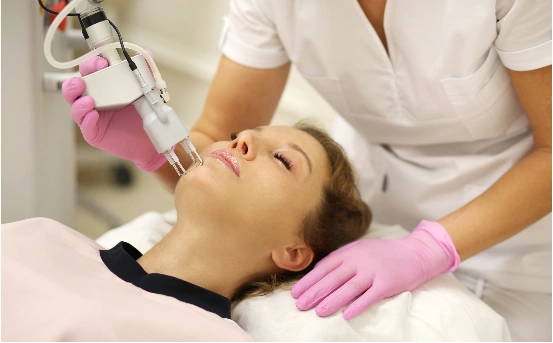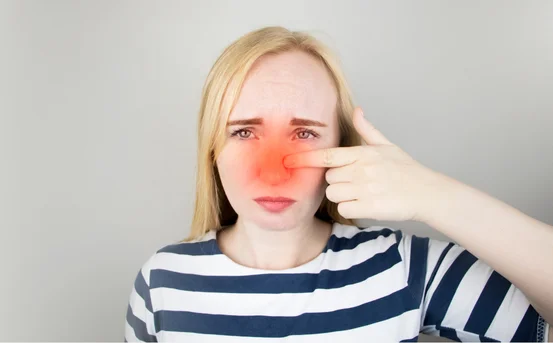Diagnosis for fractional co2 laser treatment has gained immense popularity in recent years as one of the most effective skin resurfacing procedures. Known for treating fine lines, wrinkles, acne scars, pigmentation, and uneven skin texture, it offers dramatic improvements with minimal downtime. However, before opting for this laser treatment, undergoing the proper diagnosis is crucial. A comprehensive evaluation ensures that the procedure is both safe and effective for your unique skin type and condition.
Fractional CO2 laser treatment has revolutionized the field of aesthetic dermatology, offering a highly effective solution for individuals seeking to improve their skin’s texture, tone, and overall appearance. Whether you’re dealing with stubborn acne scars, deep wrinkles, uneven pigmentation, sun damage, or simply looking to rejuvenate aging skin, this advanced skin resurfacing procedure can deliver impressive results with relatively minimal downtime.
What is Fractional CO2 Laser Treatment?
Fractional CO2 laser is a non-surgical cosmetic procedure that uses carbon dioxide laser technology to create controlled micro-injuries in the skin. These microscopic thermal zones stimulate collagen production and promote skin renewal. Unlike traditional laser resurfacing, the “fractional” method targets only a fraction of the skin surface at a time, enabling faster healing.
It is commonly used to treat :-
-
Acne scars and surgical scars
-
Stretch marks
-
Fine lines and deep wrinkles
-
Hyperpigmentation and sun damage
-
Enlarged pores
-
Skin laxity and uneven tone
Importance of Diagnosis for Fractional CO2 Laser Treatment
A thorough pre-treatment diagnosis is not just a formality it is essential for achieving the best results while minimizing potential risks. Every individual’s skin reacts differently to laser therapy, depending on factors like skin type, medical history, and lifestyle. A professional diagnosis allows the dermatologist to :-
-
Determine your skin’s suitability for the procedure
-
Customize laser settings for your skin type
-
Identify underlying skin conditions that need attention first
-
Minimize the risk of complications such as hyperpigmentation, burns, or delayed healing
Step-by-Step Guide to the Diagnosis Process
Here’s what to expect during the diagnostic consultation before undergoing fractional CO2 laser treatment :-
Detailed Skin Assessment
The dermatologist begins with a close examination of your skin’s surface and texture. Key parameters evaluated include:
-
Skin tone (Fitzpatrick skin type) :- This classification determines how your skin reacts to UV exposure and influences laser intensity.
-
Texture and thickness :- Thicker or scarred skin may require more aggressive treatment settings.
-
Presence of active acne or infections :- Active acne lesions must be treated before laser resurfacing can be done safely.
-
Scar depth and pattern :- Acne scars like icepick, boxcar, or rolling scars respond differently to treatment.
This evaluation helps in customizing the procedure to suit your skin’s needs.
Medical History Review
Your general health and medical history play a significant role in the success of fractional CO2 laser therapy. Your doctor will ask about :-
-
Previous skin treatments (chemical peels, microdermabrasion, etc.)
-
History of keloids or abnormal scarring
-
Use of medications like isotretinoin, blood thinners, or photosensitizing drugs
-
History of cold sores or herpes simplex virus outbreaks
-
Chronic conditions like diabetes, lupus, or autoimmune diseases
This information is vital to avoid adverse reactions or delayed healing post-procedure.
Discussion of Treatment Goals
A major part of diagnosis involves understanding the patient’s expectations and aesthetic goals. Some individuals may expect complete scar removal or dramatic tightening after one session, which isn’t always realistic.
Your dermatologist will set achievable goals based on your skin’s condition and explain :-
-
Number of sessions required
-
Expected downtime and recovery period
-
Level of improvement to expect
-
Need for complementary treatments like PRP, subcision, or topical serums
Photographic Documentation
High-resolution before-treatment photographs are usually taken from multiple angles. These help in :-
-
Assessing baseline skin condition
-
Tracking treatment progress
-
Identifying any adverse effects during follow-up visits
These photos form an essential part of the treatment record.
Patch Testing (if necessary)
For individuals with darker skin tones or those prone to post-inflammatory hyperpigmentation, a patch test may be done. This involves applying a small laser dose on an inconspicuous area to monitor skin response. If no adverse reaction occurs in 48–72 hours, full treatment may proceed safely.
Who is an Ideal Candidate for Fractional CO2 Laser?
Based on the diagnosis, your dermatologist will decide if you are a good candidate for the procedure. You are likely suitable if :-
-
You have moderate to severe acne scars, wrinkles, or skin laxity
-
Your skin tone is light to medium (though with caution, it can also be used in darker skin)
-
You are not pregnant or breastfeeding
-
You have realistic expectations
-
You’re not on medications that increase photosensitivity
-
You have no active skin infections or uncontrolled medical conditions
Contraindications and Red Flags
The diagnosis process may reveal that you are not an ideal candidate if you have :-
-
Active skin infections or open wounds
-
History of abnormal healing or keloid formation
-
Recent use of oral isotretinoin (within the past 6–12 months)
-
Poor immune response due to autoimmune disorders
-
Tendency for hyperpigmentation or hypopigmentation
-
Recent tanning or sunburn
In such cases, the dermatologist may recommend alternative treatments or delay the procedure until conditions improve.
Pre-Treatment Instructions After Diagnosis
Once you are cleared for treatment, your dermatologist will provide a list of pre-treatment instructions to prepare your skin :-
-
Stop using retinoids or exfoliating acids 5–7 days before the procedure
-
Avoid sun exposure and tanning beds
-
Apply prescribed antiviral medication if prone to herpes outbreaks
-
Keep skin well-hydrated and clean
-
Avoid alcohol or smoking, which can impair healing
Following these instructions ensures better results and minimizes the risk of complications.
Conclusion
Diagnosis for fractional CO2 laser treatment is a crucial first step in your journey toward smoother, more youthful skin. It ensures the procedure is tailored to your unique skin type, goals, and medical background, reducing risks and maximizing benefits. Never skip or rush through this phase trust a qualified dermatologist to guide you with expert advice and honest expectations.























